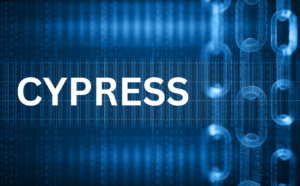
Have you ever wondered which tools our developers and testers use daily to get their jobs done?
Whether you’re in the market for a new QA tool and feeling overwhelmed by the choices or just curious, here’s a curated list of the top tools we rely on for collaboration, security testing, bug management, and more. These tools work together to help us deliver a secure, reliable, and user-friendly experience on time and within budget.
We’d love to hear your thoughts on our tech stack and any tools you think we might be missing!
Our QA Testing Tool Tech Stack
Test Management Tool
TestMonitor: We may be a bit biased, but we believe TestMonitor provides a comprehensive test management platform that simplifies test case management, tracks test execution, and facilitates defect reporting.
- Purpose: Efficient management of test cases, tracking of test execution, and defect reporting.
- Features: Test case management, test execution tracking, defect reporting.
- Benefits: Streamlines test management, enhances test coverage and traceability.
Automation Testing Tools
Cypress: A fast and reliable framework designed for testing anything that runs in a browser.
- Purpose: Automate repetitive testing tasks to increase efficiency and coverage.
- Features: Real-time reloads, automatic waiting, debugging capabilities.
- Benefits: Simplifies front-end testing and boosts testing efficiency.
Performance Testing Tools
JMeter: An open-source tool for load and performance testing that supports various protocols.
- Purpose: Ensure applications perform well under load and stress.
- Features: Comprehensive load testing, protocol support, user-friendly interface.
- Benefits: Identifies performance bottlenecks and scales for diverse testing needs.
Security Testing Tools
Burp Suite: An integrated platform for security testing of web applications, featuring vulnerability scanning and advanced manual testing tools.
- Purpose: Identify and mitigate security vulnerabilities.
- Features: Vulnerability scanning, web crawling, advanced manual testing.
- Benefits: Ensures application security and detects potential risks.
Bug Tracking and Issue Tracking Tools
JIRA: A popular tool for bug tracking and agile project management, offering issue tracking and reporting features.
- Purpose: Manage bugs and issues throughout the software development lifecycle.
- Features: Issue and project tracking, agile boards, reporting and dashboards.
- Benefits: Enhances collaboration and streamlines bug tracking and resolution.
Continuous Integration/Continuous Deployment (CI/CD) Tool
CircleCI: A CI/CD platform for DevOps teams that automates builds and deployments.
- Purpose: Automate code integration and deployment processes.
- Features: Automated builds, continuous deployment, workflow management.
- Benefits: Accelerates release cycles and reduces integration issues.
Code Review and Analysis Tools
CodeCov: An automated code review tool that provides insights into maintainability, security, and performance.
- Purpose: Analyze code quality and security.
- Features: Code coverage reporting, CI/CD integration, detailed insights.
- Benefits: Improves code quality and identifies potential issues early.
Collaboration Tools
Slack: A messaging platform that facilitates team communication through channels and direct messaging.
- Purpose: Enhance communication and collaboration among team members.
- Features: Channels, direct messaging, tool integrations.
- Benefits: Enables real-time communication and fosters team collaboration.
Version Control Systems
Git: A distributed version control system for tracking changes in source code.
- Purpose: Manage and track changes to source code over time.
- Features: Branching and merging, distributed development.
- Benefits: Maintains a history of changes and facilitates collaboration among developers.
Test Environment Management Tools
Docker: A platform for developing and running applications in containers, ensuring environment consistency.
- Purpose: Create and manage consistent test environments.
- Features: Containerization, environment consistency.
- Benefits: Simplifies environment management and ensures consistency across development stages.
What Do You Think?
Did we hit the mark with our list, or is there a tool you think we missed?
While having the right QA tools is essential, aligning them with your team’s needs and preferences can significantly enhance efficiency, reliability, and quality.





